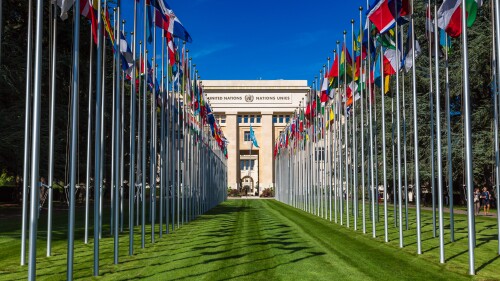Every day, in the tunnels of Gaza, forty meters underground—where light is only a memory, and which for two years enclosed the steps of the Israeli men and women reduced to hostages by Hamas—Omer Shem Tov recited the verses of Psalm 20.
Eli Sharabi emerged emaciated after 491 days in captivity to find that his wife and two teenage daughters had been killed in the October 7 attack.
Shem Tov was twenty years old when Palestinian Arab terrorists took him during the October 7, 2023, attack in southern Israel. He had grown up in a secular family. After a few days in captivity, Shem Tov began to recite blessings over any food the terrorists gave him, and in that moment the tunnel became a temple. “Faith pushed me to keep going”. He was released at the end of February as part of a temporary cease-fire agreement, after 505 days in Gaza.
Inside the Gaza tunnels—where even one’s breath could betray them, between damp walls of timeless imprisonment—there unfolded a spiritual battle between Hamas terrorists and the hostages, men and women who became guardians of something no chain could break.
They were taken by force, confined to places with no horizon, subdued with violence, torture, and hunger. But even when violence tore at their bodies and hunger hollowed out their bones and their will, they prayed. Silently. Secretly.
They safeguarded the Jewish identity that Hamas seeks to destroy, within a depth that seemed to separate the body from the world. One of them recited the Shema Yisrael. That sound became an echo on the tunnel walls. Every holiday set by Jewish tradition—Passover, Shavuot, Yom Kippur—became a challenge to the oblivion imposed by terrorism. In the tunnels, they built shadow altars.
A cramped room became a Bet HaKnesset, a synagogue; a small cloth placed on a crate became a tallit. With crumbs of bread gathered from their shared hunger, they recalled the Exodus from Egypt. And for Yom Kippur, fasting was not a choice but a condition-yet they embraced it.
And so, while the West drifts into fluid secularization, where faith is like a holiday garment, they endured. In a run-down apartment in the heart of Gaza, a young Jew sat on a dusty floor. He placed a piece of toilet paper on his head as an improvised kippah and whispered the blessing he had recited at his family’s Shabbat table since childhood.
Many released hostages have described experiences similar to Shem Tov’s, finding comfort and the strength to survive by reconnecting with Jewish rituals they had often forgotten.
Among them is Eli Sharabi, who emerged emaciated after 491 days in captivity to find that his wife and two teenage daughters had been killed in the October 7 attack. He said he recited the Shema, the most important Jewish prayer, every day in the darkness of the tunnel he shared with other hostages, and that every Friday evening he tried to recite the Kiddush, the blessing over wine, even though they had only water.
The stories of clandestine Jewish observance in the Gaza tunnels, echoing those from the Nazi concentration camps, add yet another layer to this parallel.
A week after his capture, Shem Tov decided to keep kosher as much as possible, eating cheese or canned meat when both were offered, in keeping with the dietary laws prohibiting the mixing of meat and dairy. He promised God that if he returned home, he would pray every day with tefillin, the small leather boxes containing Scripture that worshippers bind to their head and left arm during morning prayers. Every day as a free man, Shem Tov now continues the same prayers.
Their words bounced off the tunnel walls like a promise without boundaries. Daniella Gilboa later recounted that she and four of her fellow captives learned to recite a traditional Shabbat song in Arabic, fearing to say it in Hebrew.
Agam Berger described a similar experience. She comes from a masorti family, an Israeli term for those who are religiously traditional but not strictly orthodox. “As I was being kidnapped, I recited continuously the same verse Jews have recited on the threshold of death for millennia: Shema Yisrael”-
Hamas tried to force her to convert to Islam, imposing the hijab. Agam chose to observe every possible Jewish fast in that spiritual temple built in the heart of hell itself.
The captors found religious texts among newspapers and maps left behind by Israeli soldiers and brought them to the hostages, trying to learn Hebrew. They left behind a siddur, a Jewish prayer book, for which Agam created a pouch in her worn-out pants. She chose not to light a fire during Shabbat for cooking for her captors. She celebrated Passover while confined in a small room without light. She cleaned the room and decorated the table with napkins and small “decorations” made from scraps of paper.
Many comparisons have been made between the Holocaust and October 7, especially when hostages return home-some emaciated, with sunken eyes—resembling survivors of that earlier atrocity. The stories of clandestine Jewish observance in the Gaza tunnels, echoing those from the Nazi concentration camps, add yet another layer to this parallel.
As an Israeli Defense Forces helicopter flew her home, Berger held a small board on which she had written in Hebrew: “I chose the path of faith, and on the path of faith I returned.”
Hostage Matan Zangauker said he found a worn Book of Psalms underground and prayed daily. In a place with little air and almost no daylight, the steady rhythm of those verses became a routine, then a point of reference, then a comfort.
“They kept repeating to me: ‘We are Muslims,’ ‘We are Arabs,’ ‘We are the true religion,’ ‘We are Muhammad.’”
Wounded and tortured, twenty-year-old Matan Angrest was dragged into Gaza, the sole survivor of his crew after the Hamas attack. Matan recalled: “I asked for tefillin, a prayer book, and a Tanakh, and somehow they brought them to me. From that day on, I prayed three times a day: morning, afternoon, and evening. It gave me strength. It protected me.” He said that Gali Berman had a Torah scroll and that the two of them repeatedly read all five books of the Torah. “I know every parashah of the Torah by heart.”
The family of Rom Braslavski said prayer sustained him when food and sleep did not, a lifeline he clung to in the worst weeks, while Hamas tortured him, including sexually. The captors repeatedly tried to force Braslavski to convert to Islam, but he resisted. “They kept repeating to me: ‘We are Muslims,’ ‘We are Arabs,’ ‘We are the true religion,’ ‘We are Muhammad.’ The only thing that gave me strength was knowing that all those around me were not Jews, and that the reason I was there was simply because I am a Jew.”
Bar Kupershtein was a young man kidnapped during the attack on the Nova Festival. He said his faith was essential for surviving: “I prayed silently, in my heart, in my soul,” when at first he could not make any sound. When his Muslim captors prayed, it motivated him: “If they pray, I must pray even more—they pray for death, I pray for life.”
Upon his release, Kupershtein met with the Defense Minister to give him a bracelet inscribed in Hebrew: “Always in the hands of the Creator.” He said what gave him the most strength in Gaza was a song written two centuries ago by Rabbi Nachman of Breslov. The text teaches that God is found even in the darkest places.
Eitan Horn of Kibbutz Nir Oz fasted for the first time in his life on Yom Kippur while in the Gaza tunnels. Sasha Troufanov, an engineer working for an Amazon branch, found himself captive on the back of a terrorist’s motorcycle heading toward Gaza. He had been shot in both feet. On his first Sunday morning of freedom, Sasha put on tefillin with the help of Rabbi Berel Lazar, Chief Rabbi of Russia. It was the first time in his life he had worn them.
The tunnels have no windows, no wind, no sky. Only stale air, stagnant water, and silence heavy as iron.
Jewish memory is a temple that cannot be destroyed. Sharabi would later recount: “We would wake up and recite Birchot Hashachar (the morning blessings).” Throughout the week, they reserved a portion of their daily pitiful pita for Shabbat. On Friday night, Eli recited Kiddush-over water-and Hamotzi over the pita, thinking of his wife, his mother, and his sisters, not yet knowing they had all been killed.
The tunnels have no windows, no wind, no sky. Only stale air, stagnant water, and silence heavy as iron. It was there that the hostages lived—or rather survived. Far from everything, forgotten by almost everyone except Jews. And yet, in that abyss, something happened that the world above cannot fully grasp: Jewish faith did not die. It kindled, like an ember covered in ash, but it did not go out. And when Friday came, they closed their eyes and whispered the blessing over the candles-without candles, without a table, without light. Dry lips moved in the darkness, and the darkness became less hostile because of those voices rising in forced silence.
A people who have known the darkness, yet did not surrender to the night of Auschwitz; a people who returned to their land from every corner of the world after so many centuries; a state reborn; a nation surviving one enemy after another; resisting even in the inferno where bodies were reduced to bones and where the world around seemed to disappear.
Some would call it a miracle.








